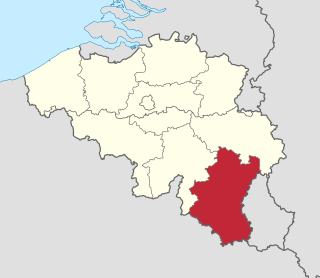
Luxembourg, also called Belgian Luxembourg or West Luxembourg, is the southernmost province of Wallonia within Belgium. It borders the country of Luxembourg to the east, the French departments of Ardennes, Meuse and Meurthe-et-Moselle to the south and southwest, and the Walloon provinces of Namur and Liège to the north. Its capital and largest city is Arlon, in the south-east of the province, near the border of the Grand Duchy of Luxembourg.

Arlon is a city and municipality of Wallonia, and the capital of the province of Luxembourg in the Ardennes, Belgium. With a population of just over 28,000, it is the smallest provincial capital in Belgium. Arlon is also the capital of its cultural region: the Arelerland.

Aubange is a city and municipality of Wallonia located in the province of Luxembourg, Belgium.

Martelange is a municipality of Wallonia located in the province of Luxembourg, Belgium.

Messancy is a municipality of Wallonia located in the province of Luxembourg, Belgium.

Musson is a municipality of Wallonia located in the province of Luxembourg, Belgium.

Saint-Léger is a municipality of Wallonia located in the province of Luxembourg, Belgium.

The German-speaking Community, also known as East Belgium, is one of the three federal communities of Belgium, with an area of 854 km2 (330 sq mi) in the Liège Province of Wallonia, including nine of the eleven municipalities of Eupen-Malmedy. The primary language of the community is German, making this one of the three official languages in Belgium. Traditionally the community and the wider area around it forms an intersection of various local languages and/or dialects, namely Limburgish, Ripuarian and Moselle Franconian varieties. The community population numbers around 79,000 – about 7.0% of Liège Province and about 0.7% of the national total.

Forêts was a department of the French First Republic, and later the First French Empire, in present-day Belgium, Luxembourg, and Germany. Its name, meaning 'forests', comes from the Ardennes forests. It was formed on 24 October 1795, after the Austrian Netherlands had been annexed by France on 1 October. Before annexation, the territory was part of the Duchy of Luxembourg and small parts of the Duchy of Bouillon. Its capital was Luxembourg City.
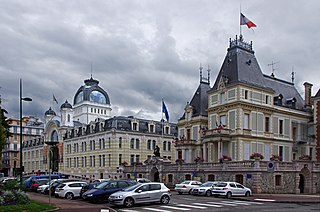
An administrative centre is a seat of regional administration or local government, or a county town, or the place where the central administration of a commune, is located.
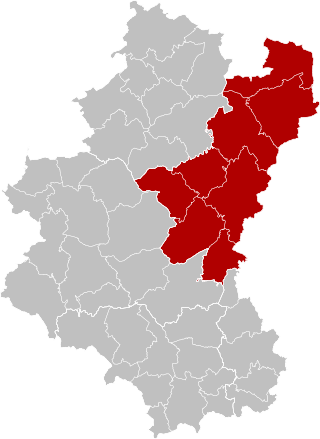
The Arrondissement of Bastogne is one of the five administrative arrondissements in the Walloon province of Luxembourg, Belgium. It is not a judicial arrondissement. Three of its municipalities, Gouvy, Houffalize and Vielsalm, are part of the Judicial Arrondissement of Marche-en-Famenne, while the rest of its municipalities are part of the Judicial Arrondissement of Neufchâteau.

The Arrondissement of Marche-en-Famenne is one of the five administrative arrondissements in the Walloon province of Luxembourg, Belgium. It is both an administrative and a judicial arrondissement. However, the Judicial Arrondissement of Marche-en-Famenne also comprises the municipalities of Gouvy, Houffalize and Vielsalm in the Arrondissement of Bastogne.
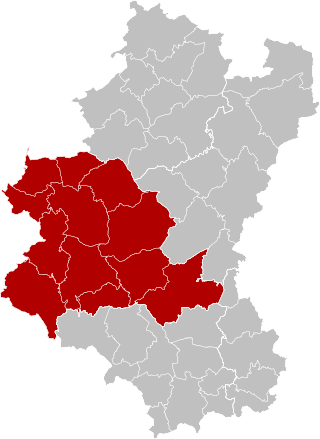
The Arrondissement of Neufchâteau is one of the five administrative arrondissements in the Walloon province of Luxembourg, Belgium. It is both an administrative and a judicial arrondissement. However, the Judicial Arrondissement of Neufchâteau also comprises the municipalities of Bastogne, Bertogne, Fauvillers, Sainte-Ode and Vaux-sur-Sûre in the Arrondissement of Bastogne.

The Arrondissement of Virton is one of the five administrative arrondissements in the Walloon province of Luxembourg, Belgium.

Athus is a part of Aubange city Wallonia and a district of the municipality of Aubange, located in the province of Luxembourg, Belgium.

The police tribunal is the traffic court and trial court which tries minor contraventions in the judicial system of Belgium. It is the lowest Belgian court with criminal jurisdiction. There is a police tribunal for each judicial arrondissement ("district"), except for Brussels-Halle-Vilvoorde, where there are multiple police tribunals due to the area's sensitive linguistic situation. Most of them hear cases in multiple seats per arrondissement. As of 2018, there are 15 police tribunals in total, who hear cases in 38 seats. Further below, an overview is provided of all seats of the police tribunal per judicial arrondissement.
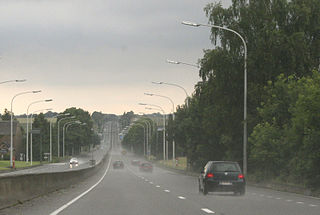
The N4 road in Belgium is a highway that runs from Brussels to Luxembourg. It starts as chaussée de Wavre at Porte de Namur on the Brussels inner ring and runs south east through Wavre and Namur, Marche-en-Famenne, Bastogne, Martelange and Arlon before terminating as route de Luxembourg at the Luxembourg border. On its route is crosses the Meuse and Lessive Rivers and the Belgian Ardennes.
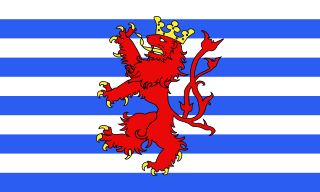
The Land of Arlon is the traditionally Luxembourgish-speaking part of Belgian Lorraine, which is now predominantly French-speaking. Arlon is the main city of this region.

Belgian Lorraine is the part of Lorraine that lies in the south of the Belgian province of Luxembourg, in Wallonia.

Arlon-Marche-en-Famenne-Bastogne-Neufchâteau-Virton is a parliamentary constituency in Belgium used to elect members of the Parliament of Wallonia from 2019. It corresponds to the province of Luxembourg. It was created from the former constituencies of Arlon-Marche-Bastogne and Neufchâteau-Virton and was first contested for the 2019 Belgian regional elections.




















